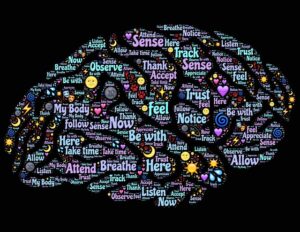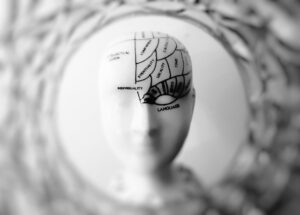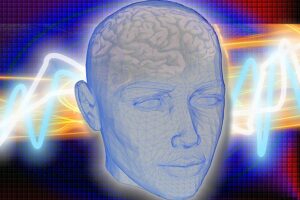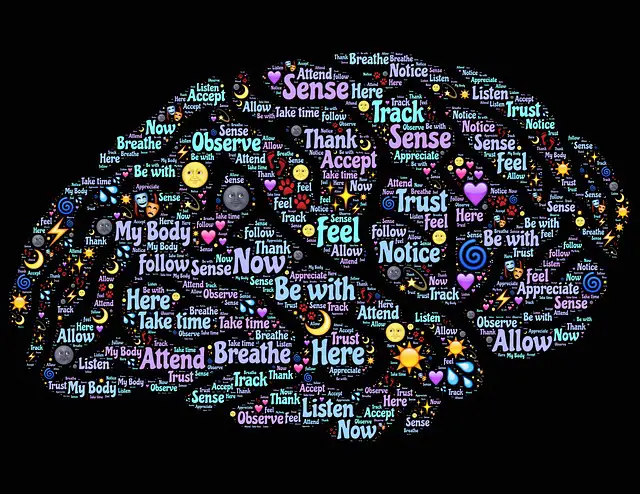
Aren’t human brains amazing? Have you ever seen one of those shows about someone who had a miraculous recovery from a traumatic brain injury, stroke, or another form of brain damage?
Although it appears inexplicable, scientists have been working for many years to figure out why these events happen.
The field of science that attempts to explain these things is known as neuroplasticity, the brain’s ability to change.
Definition of Neuroplasticity
Neuroplasticity is the brain’s ability to change as a result of environmental or structural changes and adapt by forming new neural connections over time.
Neuroplasticity, sometimes known as “brain plasticity,” refers to the capacity of the brain to adapt. Our brains have characteristics that are “plastic,” which means they can be molded in response to the environment.
MRI scans of brains that were used to study neuroplasticity revealed that neural pathways and synapses formed new connections and reformed over time, as a way for the brain to respond and compensate for damage and build new functions.
There are many types of research scientists conduct studying neuroplasticity, clinical trials allow patients who have experienced damage to the brain or are recovering from a stroke, illness, or injury to participate in experiments that help scientists understand how the brain functions.
A Brief Overview of Neuroplasticity’s History
The term “neuroplasticity” was first used by Polish neuroscientist Jerzy Konorski in 1948 to describe observed changes in neuronal structure (neurons are the cells that make up our brains), although it wasn’t widely used until the 1960s.
However, the concept dates back much further (Demarin, Morović, & Pivac, 2011).
Philosophers and scientists have long suggested that the brain has a plastic nature, meaning that it can change in response to the environment or damage.
It was discovered in the 1960s that neurons might “reorganize” after a traumatic experience.
Stress has also been shown to alter not just behaviors but also brain anatomy (Fuchs & Flügge, 2014).
Researchers found in the late 1990s that stress can actually kill brain cells—although these findings are still not completely clear.
For many years, it was thought that the brain is a “nonrenewable organ” in which brain cells are granted in a fixed amount and die over time, whether we try to keep them or not.
As Ramón y Cajal wrote, “nervous pathways in adult centers are something permanent, definitive, unchangeable.”
We now know that the opposite is true, thanks to research conducted over the last few decades.
Today, it’s widely accepted that neuroplasticity occurs in multiple ways during our lifetime through exposure to new experiences.
It wasn’t until around 1995 that researchers first proved that people can increase their brain’s plasticity by learning new skills or studying new information (Kolb, 2003).
When the brain learns something new, it forms “neural circuits” in response to what you’ve learned.
The more you keep learning and experiencing new things, the richer your neural pathways become.
How Does Neuroplasticity Work in the Brain?

The neurons communicate with one another using electrochemical messages.
The synapse is a structure in the neuron that transmits these signals.
Stimulating the neural pathways through a memory-building cognitive function (such as studying or practicing) improves synaptic communication between neurons.
The brain also has the capacity to form new synapses.
While neuroplasticity can occur throughout our lives, its effects are seen most prominently in children’s brains since they’re still developing.
Neuroplasticity occurs in three main ways: through the movement of ions across cell membranes, neural stimulation that can change gene expression, and activation of genes that contribute to growth within neurons (Bhattacharyya & Sahin, 2014).
When the brain is stimulated, it can cause synapses to strengthen.
These changes are not only seen in the brain itself but also in areas that stimulate other parts of the body, including muscles or organs that affect our moods or behaviors.
For instance, if a person learns how to solve math problems better through repeated exposure and practice, their brain will be able to perform the calculations with less effort.
The more effort is needed, the stronger the neuronal connections become in order to facilitate this process (Bhattacharyya & Sahin, 2014).
Neuroplasticity and the Learning Process
The link between neuroplasticity and learning is straightforward: when we learn, our brains form new pathways. Each additional education has the potential to create new connections in the brain and alter its default mode of operation.
It’s possible that learning how to use our brains purposefully can help us figure out how to rewire them.
The degree to which we utilize the brain’s nearly magical capacities is also influenced by how invested we are in promoting neuroplasticity and how we approach life in general.
The Growth Mindset and Neuroplasticity of the Brain
The parallels between the two are striking, a growth mindset is a belief that one’s natural abilities, talents, and skills may be developed and/or enhanced through determination, whereas neuroplasticity refers to the brain’s capacity to adapt and recover after injury.
The neuroplasticity concept empowers people with a growth attitude, who believe that they can improve their knowledge and expertise by putting in the time and effort.
Neuroplastic tells us this is exactly what happens through constant application.
You may call it a broad acceptance of neuroplasticity!
Is Neuroplasticity Limited to a Certain Age?

Neuroplasticity changes with age, as you might imagine, but it isn’t as straightforward as you may believe. In fact, neuroplasticity is a lifelong process!
Most people experience learning-related changes up until the age of seven.
At any point after that point, you can learn new skills by creating simple maps in your brain to connect new information with your past experiences.
For example, if you’re trying to learn a foreign language or a musical instrument, it will be much easier to study and master these things if you’re young.
Neuroplasticity in Children
The brain of a child is always growing, developing, and changing. Each new experience causes the brain’s structure, function, or both to change.
In the first year of life, each neuron in an infant’s brain has about 7500 connections with other neurons, by the age of two, the brain’s neurons have more than doubled the number of their connections.
The four most common kinds of neuroplasticity seen in children are:
- Adaptive: changes made to the brain by children as they practice a particular skill and allow it to adapt to functional or structural changes in the brain (such as injuries).
- Impaired: genetic or acquired anomalies cause modifications.
- Excessive: the reorganization of new, harmful pathways that might result in disability or illness.
- Plasticity that makes the brain more vulnerable to harm: Unhealthy neuronal connections are formed, making injury more likely or damaging (Mundkur, 2005).
These methods are more powerful and distinct in young children, who can recover from damage far better than most adults. Children’s severe situations of neuroplastic growth, recovery, and adaptation are evident.
Neuroplasticity in Adults
Adult brains, on the other hand, are capable of even greater change than children’s due to their plasticity.
While this ability is not absent in adults, it is generally demonstrated at lower levels and for shorter periods, yet, the adult brain is still capable of tremendous change.
It may restore old, forgotten links and operations that haven’t been utilized in a long time.
Treating learning disabilities such as autism and schizophrenia has been shown to be possible through the use of neuroplasticity, it may also be used to treat conditions such as depression and cognitive decline in adults.
Although it is not always successful, the potential for recovery is much greater than with children.
The potential of older people’s brains is generally not as high as it is in children and young adults, but with hard work and a healthy lifestyle, adults are just as capable of fostering positive transformation and growth in their minds as the younger generations.
Neuroplasticity and Brain Health
Taking care of our brains, from a physical standpoint, can foster growth because it protects their ability to learn new things.
Activities such as learning a new language or playing a musical instrument, practicing yoga or meditation, engaging in social activities, and maintaining a healthy diet are essential to the health of the brain.
When we do not take care of our brains, however, they may become less alert or even begin to shrink.
For example, an unhealthy diet full of empty calories and fat-laden foods will lead to inflexibility in learning new things because the brain has fewer nutrients to work with.
The specific effects of neuroplasticity vary with the individual, but there are some general facts about brain health that may be helpful to know.
Neuroplasticity can be used for either good or bad purposes, it is therefore up to us whether we allow our brains to develop in healthy ways or become less capable of thinking clearly and learning new things.
- See also: neurotoxins in the environment are harmful to human brain health
- See also: a new approach to brain cancer treatment using nanotechnology has promise
Neuroplasticity Examples
The following are some of the more common types of neuroplasticity changes:
- Neurogenesis: The formation of new neurons in the hippocampus and olfactory bulb is known as neurogenesis. According to recent research from Dr. Maria Llorens-Martín published in Nature Medicine, neurogenesis occurs at high rates in the young brain and can occur throughout life in humans until approximately the tenth decade.
- Synaptogenesis: Synaptogenesis is the formation of new neural connections. Synaptogenesis happens when a person’s brain is exposed to new environments and activities, such as traveling or learning a new musical instrument.
- Long-term potentiation: Repeated activities like studying or practicing can strengthen synapses over time. Long-term potentiation is linked with memory and learning.
- Long-term depression: The loss of synapses that aren’t being utilized is called long-term depression. Long-term depression is linked to memory and motor learning.
Long-term depression has been studied in the context of memory loss caused by neurological illnesses such as Alzheimer’s disease, which affects the prefrontal cortex, and medicines that impair this region.
Conclusion
Although neuroplasticity is most commonly studied in children, it continues to be relevant throughout life.
Although adults have fewer synaptic connections – and therefore less potential for new memories or thought patterns-than children do, this does not mean that adults are incapable of changing the structure of their brains.
Adult brains are still able to develop new neuronal links, which can help improve memory, learning ability, and other cognitive functions.
Adults are just as able to increase their potential for neuroplasticity by eating healthy foods, sleeping well, taking care of themselves both physically and mentally, discovering new hobbies or interests, staying active socially and mentally, and perhaps most importantly: remaining open to change in one’s life.



